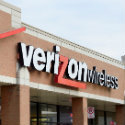Verizon is planning to conduct tests that would combine transmissions across CBRS spectrum and its existing licensed spectrum bands, including 1900MHz, AWS and 700MHz.

Verizon is asking for FCC permission to conduct a new battery of tests in 3.5GHz CBRS spectrum, and the operator's filing with the agency likely provides some hints about how Verizon plans to use the band.
The carrier said it plans to conduct TDD-LTE transmissions on outdoor 3.5 GHz CBRS small cell installations, in some cases using only CBRS spectrum but also by using "inter-band carrier aggregation" with other spectrum bands.
"Mobile devices will also operate within the RF coverage area of the small cell devices," the operator wrote in its FCC filing requesting permission to conduct the tests. "Some of the tests with mobile stations will be using CBRS spectrum only. The majority of the tests, however, will include mobiles and base stations with LTE transmitters that operate on 3GPP Band 2, Band 4, Band 66 or Band 13, in carrier aggregation mode (in both Downlink and Uplink) with Band 48."
What that means is that Verizon is planning to use carrier aggregation technology to essentially glue together transmissions in 3.5GHz CBRS (Band 48) with its other licensed spectrum bands, 1900 MHz PCS (Band 2), AWS (Band 4 and 66) and 700MHz (Band 13). Doing so ought to significantly improve customers' upload and download speeds because carrier aggregation combines transmissions in different spectrum bands into one big pipe. Verizon, as well as the rest of the major US wireless carriers, already uses carrier aggregation to combine transmissions in its various licensed spectrum bands to boost speeds.
Verizon's interest in CBRS spectrum is no secret. As reported by Light Reading, Verizon has been deploying antennas into its network that can support transmissions in the 3.5GHz CBRS band. And, for roughly a year, the company has been urging its handset suppliers to add 3.5GHz capabilities into their smartphones built for Verizon.
But Verizon's new filing with the FCC offers additional insight into exactly how the operator might include CBRS spectrum in its wider wireless network operations. A Verizon spokesperson acknowledged that the tests represent another step in Verizon's embrace of CBRS spectrum but declined to comment further.
Verizon's not alone. AT&T recently proposed increased power usage for a third category of 5G devices for use in the 3.5GHz band.
It's unclear whether Verizon intends to use the licensed section of the CBRS band or the unlicensed section of the band. Traditionally, wireless network operators like AT&T and Verizon have eschewed unlicensed spectrum because of the potential for interference. However, they've recently embraced the notion of making use of unlicensed spectrum as a way to improve the performance of their offerings in their own licensed bands. For example, AT&T, Verizon and other operators are adding LAA technology to their networks; LAA takes LTE transmissions in licensed bands and then adds capacity to those transmissions by expanding them into the 5GHz unlicensed band.
Verizon's CBRS plans likely will become more clear as the band opens up to commercial operations. After years of work and months of delay, much of the government's testing of commercial operations in the 3.5GHz CBRS band is now finished, and those in the CBRS sector expect to begin "Initial Commercial Deployments" (ICD) in the band in September. ICDs involve FCC staff essentially looking over vendors' shoulders to make sure that everything is working right. If everything looks OK during the IDCs, only then will the FCC allow real commercial deployments.
However, that initial CBRS work will only involve operations in the unlicensed portion of the band. The FCC has said it expects to begin auctioning the licensed portion of the band in 2020. Research firm Mobile Experts recently predicted that auctions of CBRS spectrum licenses could generate $2 billion in total bids.
Considering Verizon appears to have significant CBRS plans, and that the carrier prefers licensed spectrum over unlicensed spectrum, it's a good bet that Verizon will participate in the FCC's CBRS spectrum auctions next year.
— Mike Dano, Editorial Director, 5G & Mobile Strategies, Light Reading | @mikeddano
About the Author(s)
You May Also Like










